The Best Vegan Lentil Loaf
Published: September 25, 2020
Modified: February 14, 2024
This lentil loaf is my most requested holiday recipe, ever. It's tender, hearty, full of flavor, and keeps both vegans and meat eaters coming back for seconds. Although it makes a great Thanksgiving or Christmas dinner centerpiece, this vegan meatloaf is also a great meal any time of year!

I started making vegan lentil loaf as my Thanksgiving main dish several years ago, using this recipe. Over time I've experimented with changing ingredients and measurements until I finally came up with this delicious and filling version.
Ingredients and Substitutions
Loaf Ingredients

Dry green or brown lentils: I like the flavor of green lentils, but you can use your choice. Don't substitute red lentils, because they'll be too mushy. French green lentils aren't the same as green lentils; the texture of those is too tough for this recipe. I also don't recommend canned lentils because the flavor is not as good and you can't control the texture.
Ground flaxseed and water: This is the binder that holds the loaf together so it won't crumble and fall apart when you slice it.
Extra-virgin olive oil: For cooking and softening the vegetables; you could use another type of oil here if you prefer.
Onion and celery: Be sure to chop these into fine pieces; if the pieces are too big, you may have trouble getting your loaf to hold together.
Garlic: For flavor; be sure to mince finely. You could also add garlic powder into the seasoning paste instead of using fresh garlic, but I like to use fresh ingredients whenever possible.
Carrots: These should be finely grated to be easily incorporated into the loaf.
Raisins: The sweetness of the raisins balances the savory loaf flavors; however, if you dislike raisins, you can leave them out without affecting the integrity of the loaf.
Pineapple: Pineapple is the key to this lentil loaf's tender texture and adds a slight sweetness and acidity to the flavor. However, rest assured that your loaf won't taste like pineapple! Chop the pineapple finely and use your fingers to mash, draining the juices to use in the glaze. Make sure you aren't using the firm core of the pineapple.
Rolled oats and oat flour: These help absorb some of the moisture from the loaf to keep it from becoming mushy, and add structure. You could replace them with breadcrumbs and all-purpose flour, but those will be more absorbent so you should use about 2 tablespoons less of each one.
Glaze and Seasoning Paste Ingredients
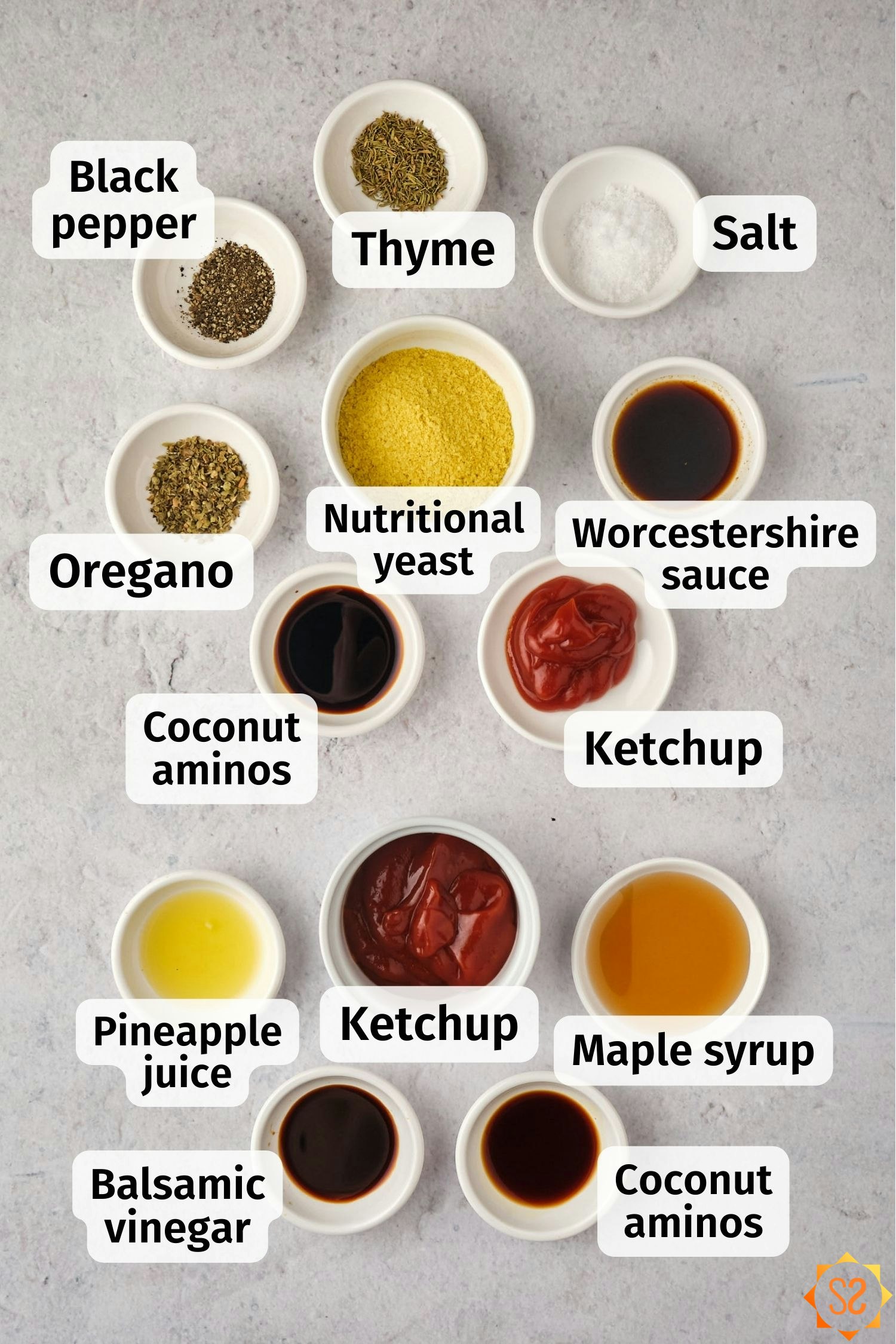
Ketchup: For rich tomato flavor, acidity, and a hint of sweetness.
Coconut aminos or soy sauce: Adds umami flavor to the loaf; using coconut aminos keeps the loaf gluten-free.
Vegan Worcestershire sauce: Both Annie's and 365 (Whole Foods) have vegan versions of Worcestershire sauce. To keep this recipe gluten-free, look for a gluten-free version (such as 365) or make your own, using coconut aminos instead of soy sauce.
Thyme, oregano, nutritional yeast, salt, and pepper: Add flavor to the lentil loaf; feel free to use any blend of seasonings you like here.
Maple syrup: Sweetens the glaze.
Pineapple juice: From the mashed pineapple you used in the loaf; this adds some acidity and sweetness to the glaze.
Balsamic vinegar: Adds some acidity and a rich, fruity flavor to the glaze.
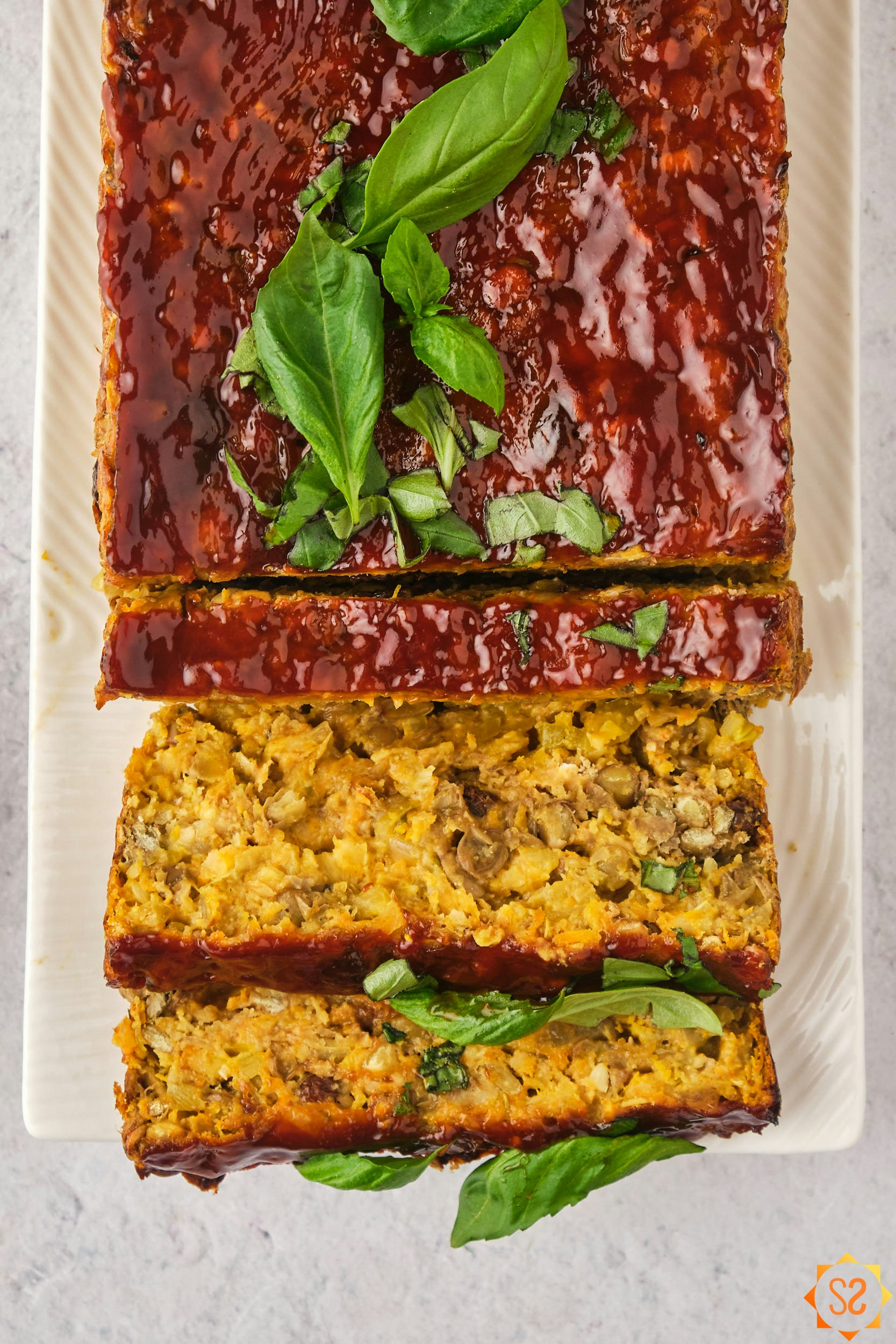
How to Serve Lentil Loaf
Lentil loaf makes a great main course, especially for Thanksgiving or Christmas dinner. It pairs well with so many sides, including salad, stuffing, mashed potatoes, and steamed vegetables like broccoli, carrots, cauliflower, and green beans.
Here are some more great vegan recipes you can make that pair perfectly with this lentil loaf:

How to Store and Reheat Leftovers
If you have leftovers, you can keep them in an airtight container in the refrigerator for up to 5 days. You can also freeze lentil loaf slices for up to 3 months in a freezer bag or freezer-safe container. I recommend freezing the slices on a parchment-lined baking tray first, then transferring them to a freezer bag or container so they're easier to pull apart later. You could also freeze them in your freezer container, separating each slice with a small piece of parchment paper.
To reheat leftovers, first defrost the slices thoroughly if they're frozen. Then wrap individual slices in foil (to keep them from drying out) and reheat in the oven at 350°F (180°C) for 12-15 minutes, until heated through.

Making Lentil Loaf in Advance
This lentil loaf is great for the holidays because it lends itself to being made a day or two ahead of time. Just prepare the loaf and glaze as usual (keep the glaze separate for now), then cover and refrigerate both until you're ready to bake.
At least an hour before baking, remove the loaf and glaze from the refrigerator. After an hour, add the glaze, then bake. You may need to add 5 minutes to your bake time, depending on how cold or warm your loaf was when you put it in the oven.
Frequently Asked Questions
How can I make this recipe gluten-free? Most of the ingredients in this lentil loaf are already gluten-free. But you'll need to pay attention to two ingredients: soy sauce and Worcestershire sauce. Be sure to use coconut aminos in place of soy sauce. Worcestershire sauce commonly contains soy sauce as well, so you'll need to find a vegan and gluten-free brand (such as Whole Foods' 365), or you can make your own using coconut aminos instead of soy sauce.
Can I adjust the seasonings or add other seasonings to the loaf? Yes, you can add or change seasonings or flavors to your preferred taste. Dry ingredients shouldn't present any problem, but be cautious about adding too much liquid (i.e. ketchup, sauces), as that could keep the loaf from holding together.

Why is there pineapple in this recipe? One of the keys to this recipe is pineapple. It might seem odd to be putting pineapple into a lentil loaf, but it's the secret to its tender texture. And it adds just a bit of flavor to the vegetable loaf without a fruity taste. The taste is very subtle and most people would probably never know there's pineapple in this loaf.
Should I use fresh or canned pineapple? I use fresh pineapple, but if you can only get canned pineapple at the grocery store (or find it easier to work with), others have had good results with that as well!
I don't like raisins, can I leave them out? Yes! Raisins are a personal preference that people feel strongly about (for better or worse), so if you don't like them you can leave them out without affecting the overall consistency of the loaf.
Why is my lentil loaf mushy? This can happen when there's too much liquid in the loaf, often because of the lentils. Make sure you're draining your lentils well after cooking; if you used canned lentils, that could be the culprit; I recommend cooking dry lentils instead. This also might happen if you included the juice from the pineapple in the loaf instead of using only the pieces.

The Best Vegan Lentil Loaf
Yield10 servings
Prep Time40 minutes
Cook Time50 minutes
Total Time1 hour, 30 minutes
Ingredients
- 1 cup dry green or brown lentils
- 1/4 cup ground flaxseed
- 1/2 cup water
- 1 medium yellow onion, finely chopped
- 3 cloves garlic, minced
- extra-virgin olive oil for cooking
- 1 cup celery, finely chopped (about 2 stalks)
- 1 cup carrots, peeled and grated (about 2-3 medium carrots)
- 1/4 cup raisins
- 1/2 cup pineapple, finely chopped and mashed
- 1/2 cup rolled oats
- 1/2 cup oat flour
Seasoning Paste
- 1 1/2 tbsp. ketchup
- 1/2 tbsp. coconut aminos or soy sauce
- 1 tsp. dried thyme
- 1 tsp. dried oregano
- 2 tbsp. nutritional yeast
- 1 1/4 tsp. salt
- 1/2 tsp. black pepper
Glaze
- 3 tbsp. ketchup
- 1 tbsp. maple syrup
- 1/2 tbsp. freshly pressed pineapple juice
- 1 tsp. balsamic vinegar
- 1 tsp. coconut aminos or soy sauce
Instructions
Preheat oven to 350°F (180°C).
Using a fine sieve, rinse your lentils to remove any debris. Cook the lentils, adding about 5 minutes to package instructions for tender lentils that can be mashed easily (total of about 25 minutes for green lentils or 30 minutes for brown lentils). Drain the lentils and transfer them to a large mixing bowl. Use a potato masher to mash them, leaving some whole lentils in tact.
![Lentils after being cooked and mashed.]()
While your lentils are cooking, line a 9x5 loaf pan with parchment paper. Cut two pieces of parchment paper, one to the width of the pan, and one to the length of the pan, so you have one piece facing each direction, and parchment “handles” hanging over all four sides. This will help with easily removing the loaf later.
![A loaf pan lined with parchment paper.]()
Make your flax egg by combining ground flax with 1/2 cup water in a small bowl and mixing well. Set aside to thicken.
![Mixed flax eggs in a bowl]()
Pre-heat a large skillet or saute pan over medium heat and add a bit of olive oil to the pan. Cook the onion and garlic for about 5-7 minutes (longer for softer veggies, less time for crunchier veggies). Stir regularly with a wooden spoon, and add water if the vegetables begin to dry out.
Add your celery, carrots, and raisins to the pan and continue cooking for another 3 minutes or so. Remove from heat and allow to cool slightly.
![Vegetables, cooked in a saute pan.]()
After your pineapple is chopped in tiny pieces, mash it with your fingers. You want to ensure that you only have soft pieces of pineapple (no core pieces). Separate out the juice to use later in the glaze.
![Mashed pineapple in a small bowl.]()
Mix 1 1/2 tbsp. ketchup, 1/2 tbsp. soy sauce, 1/2 tbsp. Worcestershire sauce, thyme, oregano, nutritional yeast, salt, and pepper into a paste. Add the paste to the bowl with the flax egg and mix well.
![Seasoning paste and flax egg mixed together.]()
To your large mixing bowl with the lentils, add vegetables, pineapple (only pieces, no juice), rolled oats, oat flour, and your flax egg-seasoning paste mix. Mix ingredients well to ensure that they are evenly distributed. At this stage, you can taste the loaf mixture and add any additional salt or seasonings that you’d like. Then, press the mix into the lined loaf pan.
![The ingredients for the loaf mixed together in a large mixing bowl.]()
In a small bowl, mix the remaining ingredients (ketchup, maple syrup, pineapple juice, balsamic vinegar, and soy sauce). Use a spoon or basting brush to cover the top of the loaf with the glaze.
![The loaf in a loaf pan, covered with glaze, with a basting brush resting on top.]()
Bake the loaf at 350°F (180°C) for 50 to 55 minutes.
Allow the loaf to cool in the pan for about 15 minutes. Then, using the parchment handles, remove it from the pan and place it on a wire rack to cool for another 30 minutes before slicing and serving.
Notes & Hints
Be sure to chop all your ingredients very finely. The larger the pieces, the harder it will be to get your loaf to hold together.
This recipe fills a 9x5 loaf pan. If you have a smaller pan, you can adjust the recipe accordingly. An 8 1/2 x 4 1/2 pan will hold about 3/4 of the recipe, while an 8x4 pan will hold about 1/2 of the recipe.
Make ahead: Prepare the loaf and glaze (leave the glaze off for now) and refrigerate until ready to bake. Remove from the refrigerator at least an hour before baking, add the glaze, then bake. You may need to add 5-10 minutes to cook time.
Leftovers: Refrigerate in an airtight container for up to a week. For longer storage, cut into slices, freeze on a parchment-lined baking tray, then store in freezer bags in the freezer.
Reheating: From the refrigerator, reheat a slice in the oven at 350°F (180°C) for 12-15 minutes. If reheating a frozen slice, allow it to thaw before reheating.
Use coconut aminos and a gluten-free vegan Worcestershire sauce (such as 365 brand) to keep this recipe gluten-free.
Nutrition Data
Serving Size: 1/10 of recipe; Calories: 181; Fat: 3 g.; Saturated Fat: 0 g.; Cholesterol: 0 mg.; Sodium: 366 mg.; Carbohydrates: 33 g.; Fiber: 6 g.; Sugar: 10 g.; Protein: 8 g.; Vitamin A: 3 mcg. RAE; Vitamin B12: 2 mcg.; Vitamin C: 8 mg.; Vitamin D: 0 mcg.; Calcium: 33 mg.; Iron: 3 mg.; Potassium: 366 mg.; Zinc: 0 mg.Note: This data should be used only as an estimate. Please see the nutrition section of my terms and conditions for more information on how this data is calculated.
Vegan recipes in your inbox
Join the community and get my newest and best yummy vegan recipes sent right to your email!

Share this:







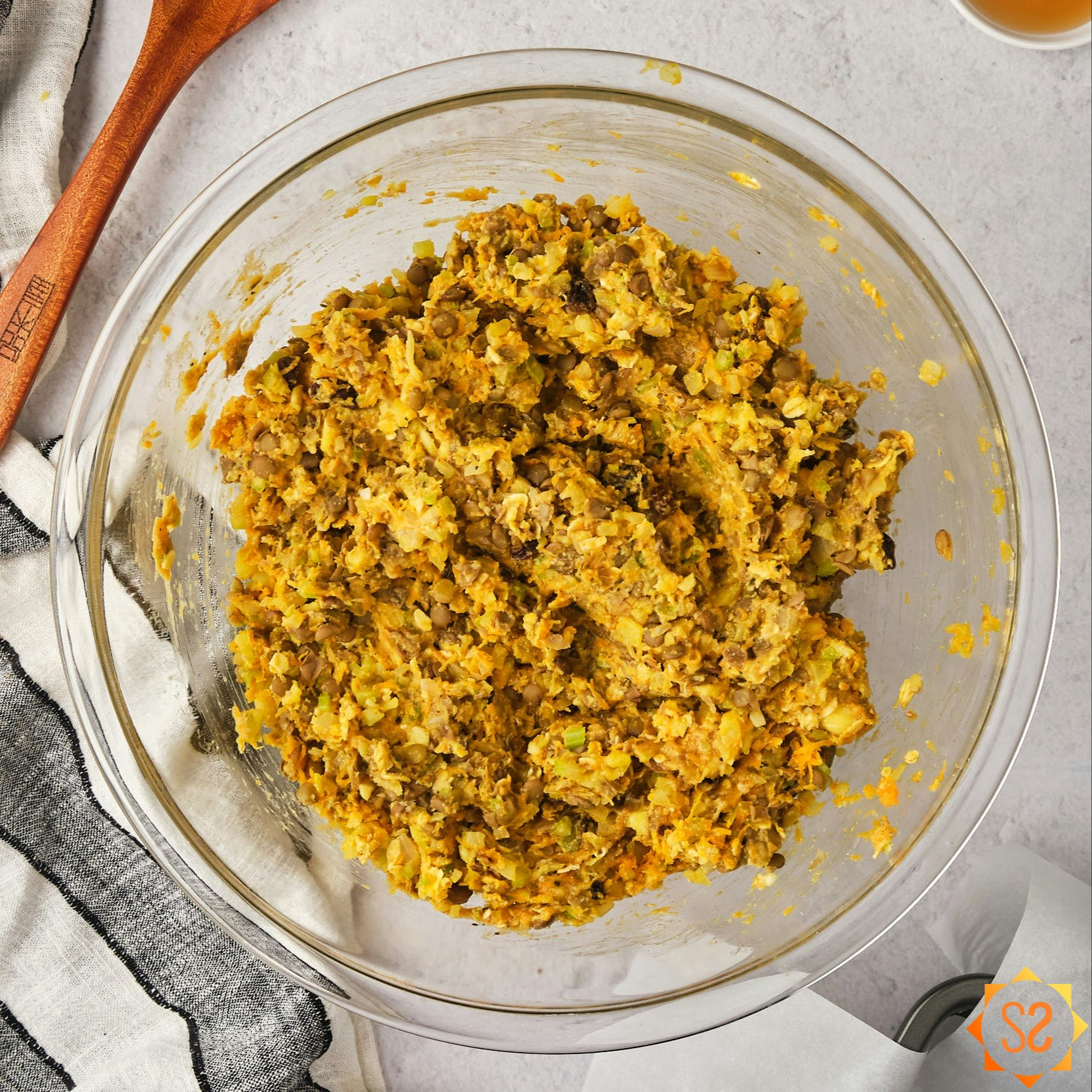

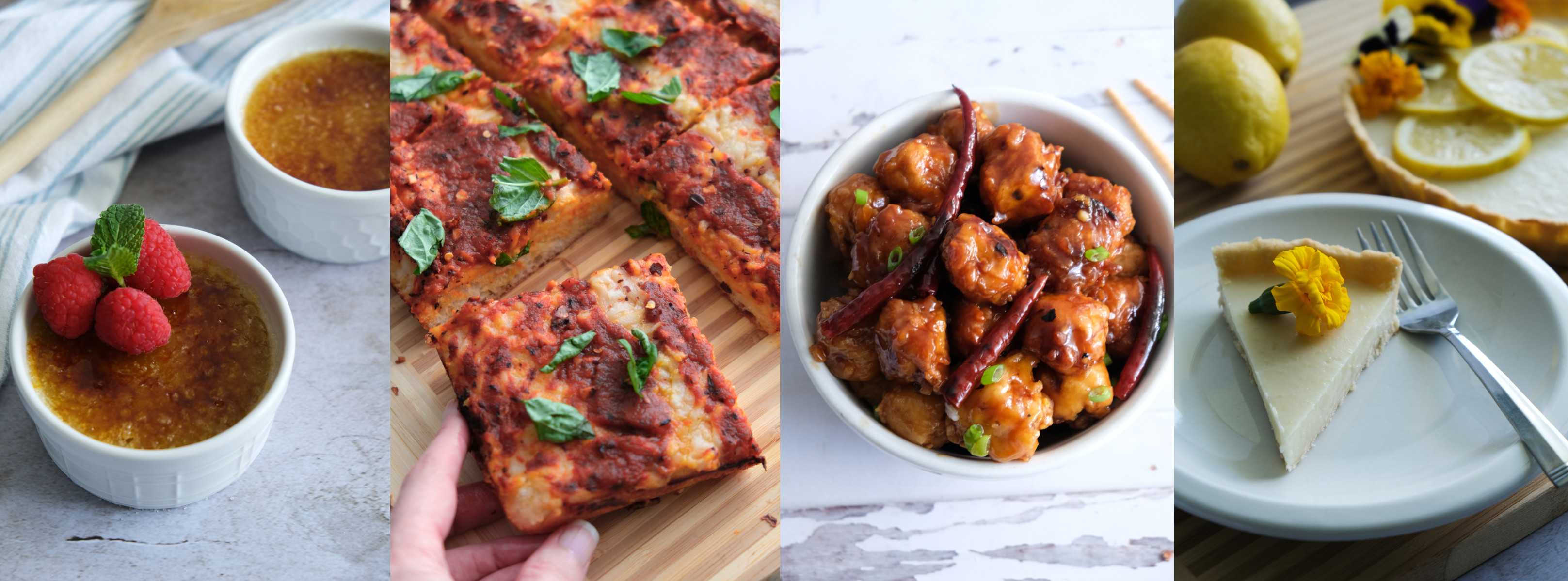











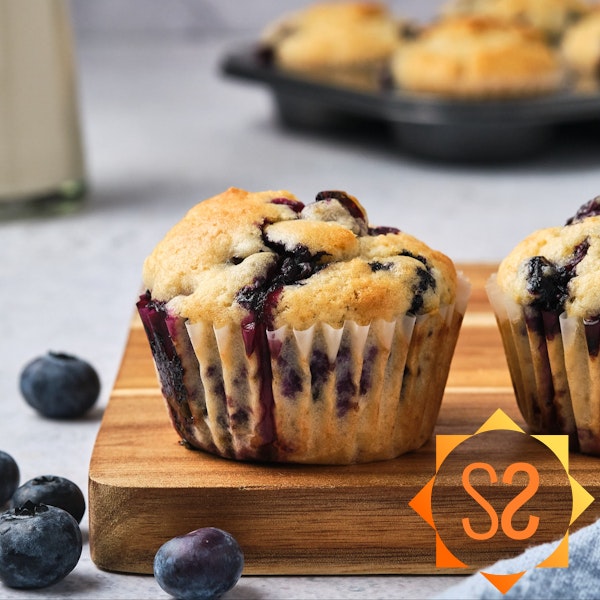


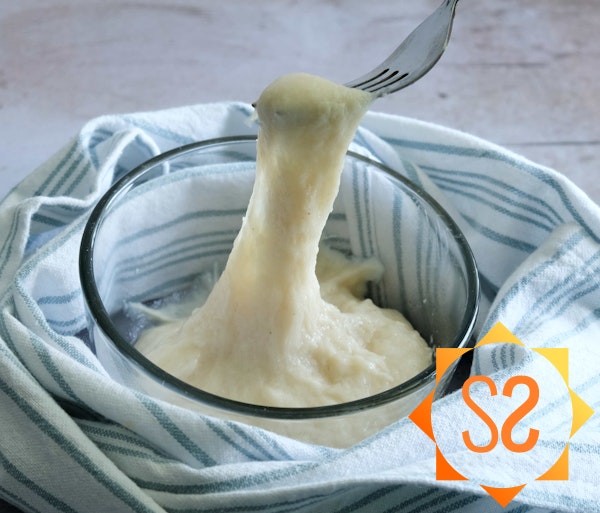

Leave a Comment
I love reading comments! I'll do my best to answer questions, too. If you made the recipe, please leave a star rating, it helps support the blog so I can make more recipes and articles. Thank you!
says